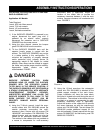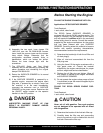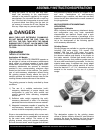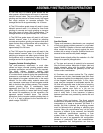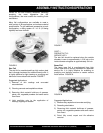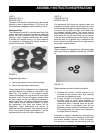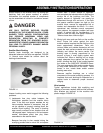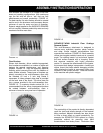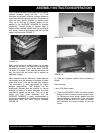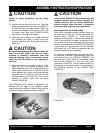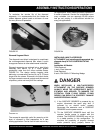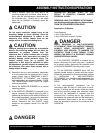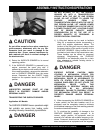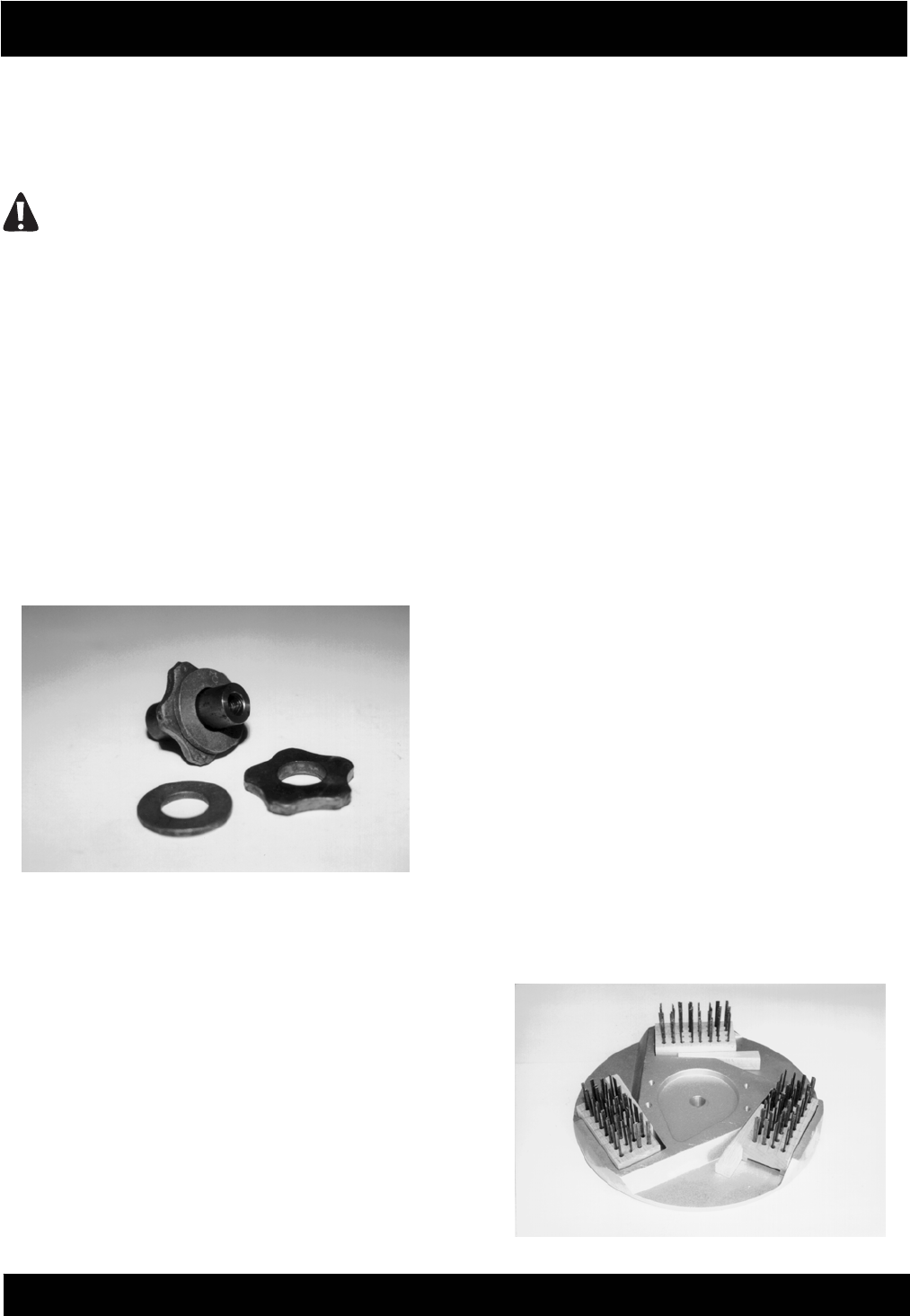
DFG-SERIES SURFACE GRINDERS OPERATION AND PARTS MANUAL REV #4 (05/28/09) PAGE 22
ASSEMBLY INSTRUCTIONS/OPERATIONS
spacer washer on the scarifier block. By mixing and
matching flails and spacer washers of specific
thicknesses, the required number of components
can be assembled on a block in a minimum amount
of time.
DANGER
USE ONLY FACTORY SUPPLIED SPACER
WASHERS ON THE SCARIFIER BLOCK. OTHER
WASHER TYPES AND/OR CONFIGURATIONS
CAN PRODUCE ABNORMAL WEAR AND
ELONGATION, RESULTING IN COMPLETE
SEPARATION FROM THE SCARIFIER BLOCK.
INADVERTENT SPACER WASHER SEPARATION
CAN LEAD TO PROPERTY DAMAGE AND/OR
PERSONAL INJURY.
Scarifier Block Bushing
Scarifier block bushings are designed to be
discarded whenever the flails are replaced. FIGURE
11. Normal wear should be uniform about the
bushing circumference.
FIGURE 11
Uneven bushing wear would suggest the following
problems:
1) Inadequate free play exists between the
flails/spacer washers and the scarifier block
case. If the flails and spacer washers do not
have complete freedom of movement, they will
not be capable of properly rotating about the
scarifier block bushing. The result is bushing
wea
r usually confined to two locations that are
180 degrees apart. Variances in flail and spacer
washer thicknesses affect free play when
assembled on the scarifier block.
Because free play is also created during the
scarifying process due to actual flail and spacer
washer wear, a certain amount of "tightness"
can sometimes be tolerated without affecting the
service life of the bushings and flails. The
specific amount of "tightness" can usually be
determined through trial and error. If the flails
and spacer washers
appear too tight on the
scarifier block, remove an appropriate flail or
washer and reassemble the block. If a short,
operational test indicates normal component
wear patterns, the apparent problem has been
solved. A general rule for consideration: it is
better to have the flails and spacer washers a
"little too loose than a little too tight".
2) Mixing both worn and new flails on the scarifier
block. Proper flail action against the work
surface material requires that the flails be of the
same a
pproximate dimensions. Flails with
various inside and outside dimensions will not
impact the work surface material with the same
intensity and deliver the same results. Flail
bushing wear is directly proportional to the
amount of force it must supply against each
individual flail. When a bushing can no longer
supply adequate force against the flails, it will
break, a llowing the flails to be hurdled against
the inside of the SURFACE GRINDER frame.
The more aggressive flails require greater forces
to keep them contained on the block. These
forces, in turn, create faster and/or uneven
bushing wear rates.
Because sca
rifier bushings are a critical
component of the actual scarifying process, it is
important that each bushing be inspected on a
regular basis to determine proper structural
integrity.
Wire brushes
Typical applications include light scarifying and
cleaning of concrete, asphalt, steel and tile surfaces.
Wire brushes are secured to the machine with
plastic wedges. FIGURE 12.
FIGURE 12





